When the luteal phase of the menstrual cycle feels like a pressure cooker, stress is often the hidden spark that makes the heat unbearable. Understanding why Premenstrual Dysphoric Disorder (PMDD) is a severe form of pre‑menstrual syndrome marked by intense mood swings, anxiety, and physical discomfort flares up under stress can empower you to cut the cycle short before it even starts.
What Is Premenstrual Dysphoric Disorder?
PMDD affects roughly 5% of menstruating people, according to the latest DSM‑5 estimates. Unlike typical PMS, the symptoms are disabling: severe irritability, hopelessness, and physical pain that interfere with work, school, or relationships. Diagnosis requires at least five symptoms-four mood‑related and one physical-appearing in the week before menses and resolving shortly after onset.
Stress: The Overlooked Co‑Driver
Stress is more than a mental state; it’s a cascade of hormonal signals that intersect with the menstrual cycle. When you feel pressured at work or worried about a personal issue, the body releases Cortisol the primary stress hormone that prepares the body for a ‘fight‑or‑flight’ response. Elevated cortisol can blunt the normal rise and fall of estrogen and progesterone, throwing the delicate balance that regulates mood out of sync.
Hormonal Cross‑Talk: How Stress Messes with the Cycle
Two systems sit at the crossroads of stress and PMDD:
- Hypothalamic‑Pituitary‑Adrenal (HPA) axis: Chronic stress keeps the HPA axis hyper‑active, leading to higher baseline cortisol levels throughout the month.
- Serotonergic pathways: Cortisol spikes reduce serotonin synthesis, while serotonin itself modulates both mood and the release of gonadotropin‑releasing hormone (GnRH), the driver of the menstrual cycle.
When the HPA axis is over‑active, progesterone metabolites that normally have calming GABA‑like effects become less effective, leaving the brain more vulnerable to anxiety and irritability.
Biological Markers Linking Stress to PMDD
Research from the University of Cambridge (2023) measured cortisol profiles in women with PMDD. The study found a 30% higher morning cortisol level during the luteal phase compared to controls. Another 2024 meta‑analysis showed that women with PMDD have a blunted cortisol awakening response, hinting at a disrupted feedback loop.
Other biomarkers include:
- Elevated cortisol - measured in saliva or blood.
- Reduced serotonin transporter (SERT) availability on PET scans.
- Altered progesterone‑derived neurosteroid levels, especially allopregnanolone.
These markers underline that stress isn’t just an emotional overlay; it reshapes the neurochemical environment that fuels PMDD symptoms.
Clinical Evidence: Stress as a Predictor of Symptom Severity
A 2022 longitudinal study tracked 200 women over two menstrual cycles, recording daily stress scores with the Perceived Stress Scale. Participants with high stress scores were three times more likely to meet PMDD criteria, even after adjusting for age, BMI, and contraceptive use.
Another trial examined the effect of a mindfulness‑based stress reduction (MBSR) program on PMDD. After eight weeks, the intervention group reported a 40% drop in irritability and a 25% reduction in physical pain, while cortisol levels fell by an average of 12 nmol/L.
Managing Stress to Ease PMDD
Because stress drives the hormonal chaos behind PMDD, targeting stress directly can blunt the symptom surge. Below are evidence‑backed strategies:
- Cognitive‑behavioral therapy (CBT): Structured CBT protocols for PMDD reduce mood symptoms by 30% and improve coping skills during the luteal phase.
- Selective serotonin reuptake inhibitors (SSRIs): Intermittent dosing (e.g., twice a week) aligns with the luteal window, stabilizing serotonin and indirectly dampening cortisol spikes.
- Mindfulness meditation: Daily 10‑minute sessions lower perceived stress and cortisol, offering a low‑cost adjunct to medication.
- Regular aerobic exercise: Moderate‑intensity activity 3-5 times a week cuts cortisol by up to 20% and boosts endorphins, which rival progesterone’s mood‑lifting effects.
- Sleep hygiene: Consistent 7-9 hours of sleep supports the HPA axis reset, preventing overnight cortisol accumulation.
For many, a combination of these approaches yields the best results. Hormonal treatments like oral contraceptives or gonadotropin‑releasing hormone (GnRH) agonists remain options when stress‑focused measures are insufficient.
Practical Checklist: Reducing Stress‑Induced PMPMDD Flare‑Ups
Keep this list handy during the week leading up to your period:
- Log daily stress levels on a 1‑10 scale. Spot spikes early.
- Schedule a 10‑minute mindfulness break each morning and evening.
- Plan at least one enjoyable activity (walk, hobby, coffee with a friend) after work.
- Avoid caffeine and alcohol after 3 p.m. - both raise cortisol.
- Take prescribed SSRIs or hormonal medication as directed, ideally on a luteal‑phase schedule.
- Sleep: turn off screens 30 minutes before bed, keep bedroom cool.
- Exercise: aim for 30 minutes of brisk walking or cycling.
Review the checklist each evening. Small, consistent actions can keep the stress‑hormone surge at bay and smooth out the emotional rollercoaster.
When to Seek Professional Help
If you notice any of the following, it’s time to talk to a clinician:
- Symptoms persist beyond the first three days of menses.
- Suicidal thoughts or self‑harm urges appear.
- Daily functioning is impaired despite lifestyle changes.
A mental‑health professional can confirm PMDD using DSM‑5 criteria, order hormone panels, and tailor a treatment plan that may combine medication, therapy, and stress‑management techniques.
Key Takeaways
- Stress amplifies cortisol, which interferes with estrogen, progesterone, and serotonin - the core drivers of PMDD.
- Biomarkers such as elevated morning cortisol and reduced serotonin transporter activity link stress to symptom severity.
- Targeted stress‑reduction (CBT, mindfulness, exercise, sleep) can halve the intensity of PMDD episodes.
- Medication (SSRIs, hormonal contraceptives) works best when paired with stress‑management.
- Track stress daily, follow a simple checklist, and seek professional help if symptoms become disabling.
Frequently Asked Questions
Can stress alone cause PMDD without hormonal changes?
Stress doesn’t replace the hormonal fluctuations that define the luteal phase, but it can intensify them. Elevated cortisol disrupts the normal estrogen‑progesterone balance, making mood symptoms more pronounced. So stress acts as a powerful amplifier rather than a sole cause.
Are SSRIs effective if I only have stress‑related PMDD?
Yes. SSRIs boost serotonin, which counteracts both mood swings and cortisol‑induced serotonin depletion. Intermittent dosing during the luteal phase has been shown to reduce irritability and physical pain in stress‑triggered PMDD cases.
How quickly can mindfulness lower cortisol levels?
Studies report measurable cortisol reductions after just two weeks of daily 10‑minute mindfulness practice. The effect grows with consistency, often plateauing after six weeks.
Is there a lab test to confirm stress‑induced PMDD?
No single test diagnoses PMDD, but a combination of salivary cortisol curves, serum progesterone levels, and a structured symptom diary can differentiate stress‑driven exacerbation from baseline hormonal changes.
Can lifestyle changes replace medication?
For mild to moderate cases, diligent stress management, regular exercise, and sleep hygiene can be enough. Severe cases often still benefit from SSRIs or hormonal therapy, but combining them with lifestyle tweaks yields the best outcomes.

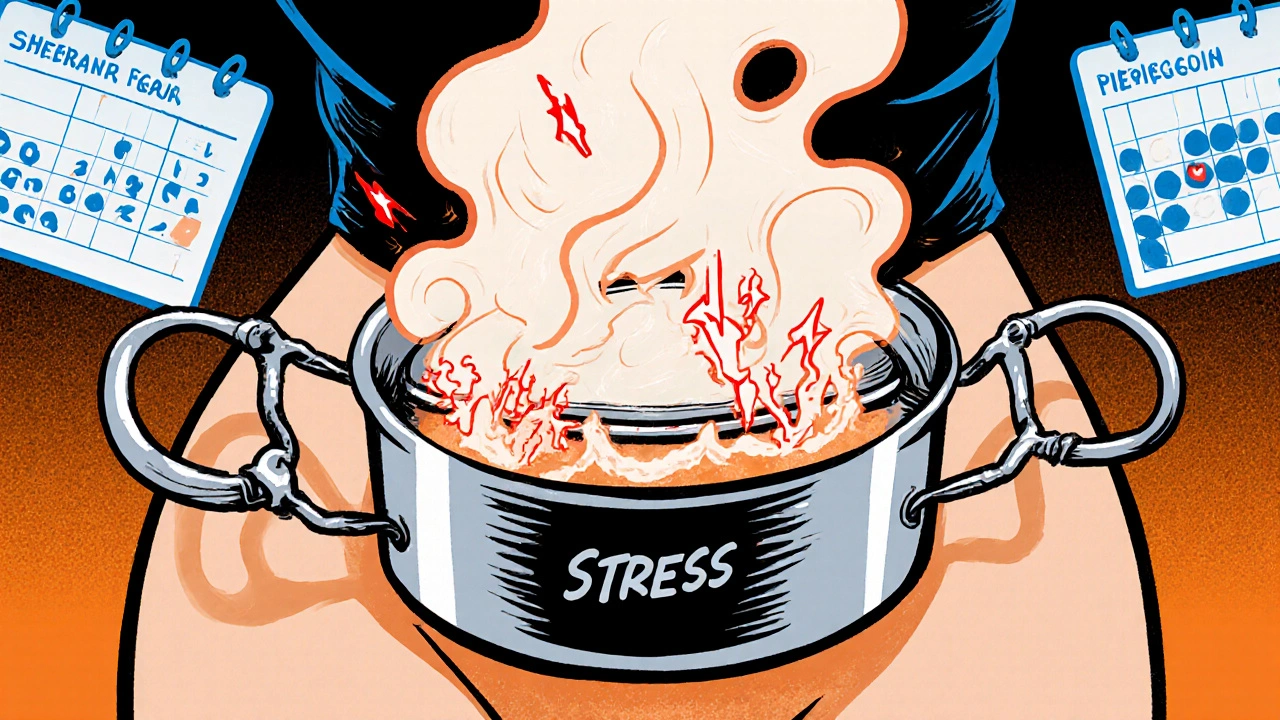
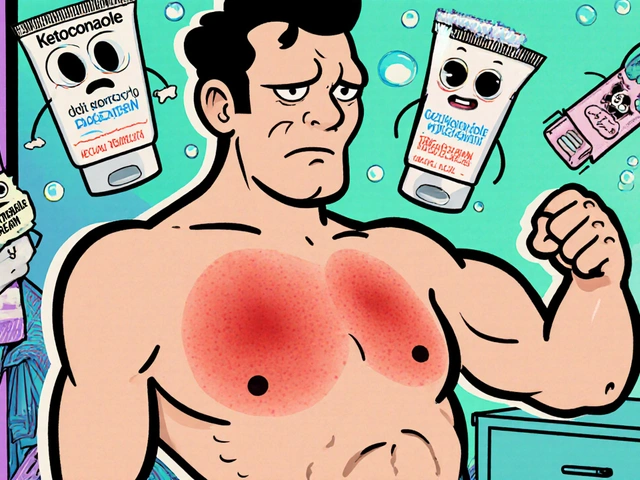
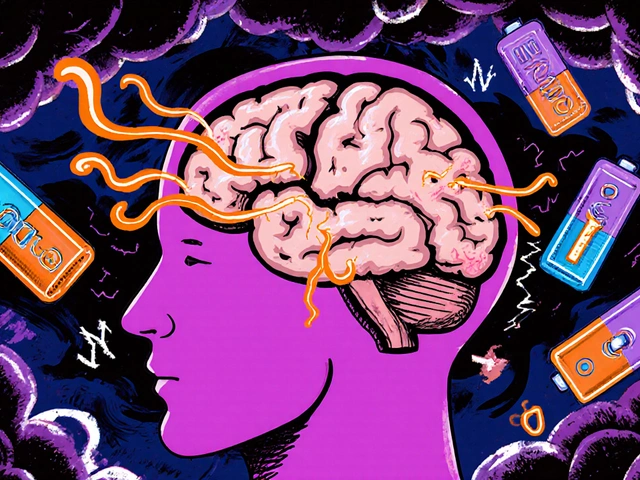

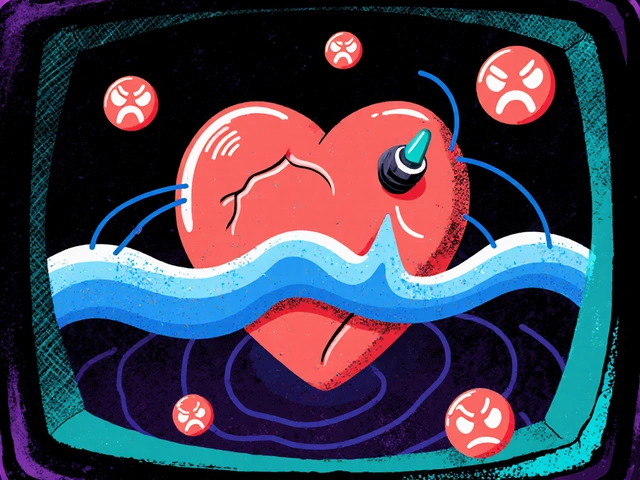
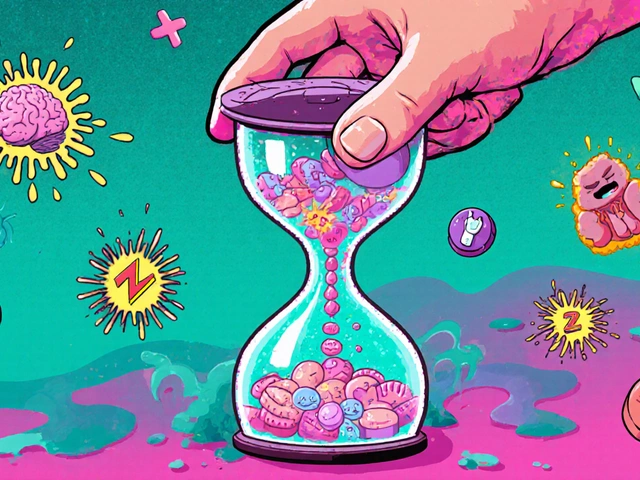
Comments
Ralph Barcelos de Azevedo
October 21, 2025 AT 22:09 PMWe all have a duty to recognize how stress can turn a normal cycle into a nightmare. If we don’t take personal responsibility for managing our stressors, we’re essentially punishing ourselves and those around us.
Peter Rupar
November 2, 2025 AT 11:56 AMYo stop preachin u cant blame stress when u yourself add more drama every damn day!
Raja M
November 14, 2025 AT 01:42 AMI hear the frustration, and it’s completely understandable how stress can feel like a hidden detonator for PMDD. The body’s cortisol surge really does hijack the delicate hormonal dance, making emotions swing wildly. What’s powerful is that mindfulness and regular movement can gradually retrain that response. Even a brief 10‑minute breathing break can lower cortisol enough to notice a calmer mind. Remember you’re not alone in this cycle, and small steps add up.
Rob Flores
November 25, 2025 AT 15:29 PMAh, another deep dive into the hormonal labyrinth – as if we needed yet another checklist to survive our own biology. The prose reads like a university lecture, but the real insight is that stress isn’t a myth; it’s the obvious villain everyone pretends to ignore.
Shiv Kumar
December 7, 2025 AT 05:16 AMIndeed, the elegant inter‑play between the HPA axis and gonadal steroids deserves a discourse beyond mere bullet points. One must appreciate the nuanced neurochemical symphony rather than settle for reductive advice.